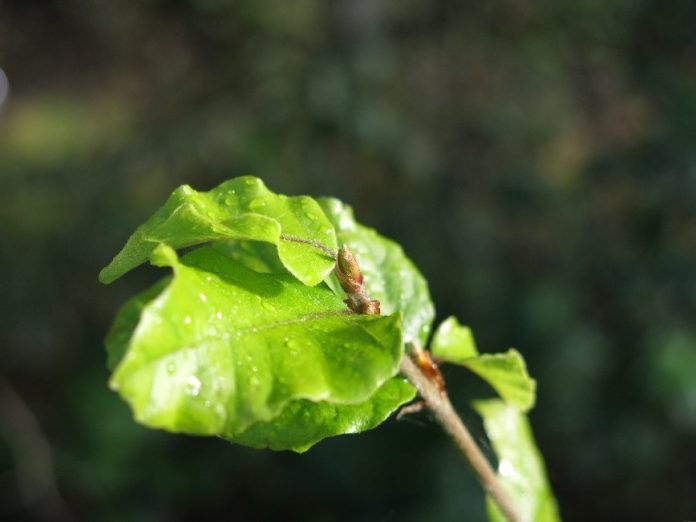Professor Line Nybakken, Norwegian University of Life Sciences talks about the climatic potential of beech trees…
Beech has a wide distribution in Europe, but reaches its northern boundary in South-East Norway. With future climate change, it is expected that the beech will expand northwards, probably at the cost of spruce. Beech in other words have the potential to get a far greater distribution than today. One can already see that regrowth of beech is establishing rapidly in older spruce stands at its northern brim in Norway. At the same time, spruce is expected to struggle under the climatic conditions expected in this area in the future.
The dominant tree species and their impact on ecosystems above and below ground has great importance for future climate, through their potential for binding CO2. Previous studies, mostly done in temperate forests, suggest that CO2 sequestered is somewhat larger in coniferous forests compared with broadleaf forests. Beech forests, however, are assumed to have a potential approximate to what we find for conifers. As the deciduous forests also have a higher albedo than the dark coniferous forests, the effect of more beech forests in boreal regions may have a counteracting effect on climatic warming. We need more knowledge about both the capability for adaption, both of beech and spruce, about how the two tree species affect decomposition and thus CO2 storage below ground. To understand this, we also need more knowledge about the historical emergence and distribution of beech in Norway, and not least about how likely the projected future expansion is. These are some of the aspects we cover in our ongoing project “From spruce to beech forests – fundamental ecosystem transformation driven by climate change”.
The climatic potential of beech
Using climate chamber and field experiments we try to define the climatic potential of the Norwegian beech provenances by studying i.e. winter dormancy stability and frost resistance, growth and carbon allocation. Investigations of spring bud break from field and greenhouse indicate that bud break dates of European beech at its northern distribution brim are mainly governed by temperature, in contrast to the Central European populations that are regulated also by day length. This means that warming in the north will give earlier bud break in spring, with increased risk of spring frost damage of shoot tips.
In a comparative study of 81 pairs of neighboring old spruce and beech trees, we show that both species already struggle with increasing temperature and decreasing precipitation. The effect is, however, strongest for spruce, indicating that beech is handling the new climate regime better in this region.
Decomposers and belowground C
The community of fungi, small animals and bacteria living below ground, is decisive for both how fast nutrients from litter is released for the next generation and how much carbon is stored over longer time periods. How this community is composed is in turn largely decided by what trees are dominating above ground. We see that spruce litter decompose quicker than that of beech. This may be related to another finding, namely that the biomass of fungi is greater under spruce. On the other hand, beech litter release its nitrogen faster, and may therefore provide better growing conditions. Interestingly, the societies of fungi and bacteria under the two tree species are very different, which means that the diversity below ground change will alter with a shift in dominating tree species.
With beech at its northern distribution limit in Norway, these studies provide valuable information about adaption potential in a long-lived species under climate change, as well as the effect of an expansion on an ecosystem level. At the same time, information on the outcome of the competition and interplay between beech and spruce will be important for future forestry in the region.
Line Nybakken
Professor
Norwegian University of Life Sciences
+47 67231787
line.nybakken@nmbu.no
Please note: this is a commercial profile











